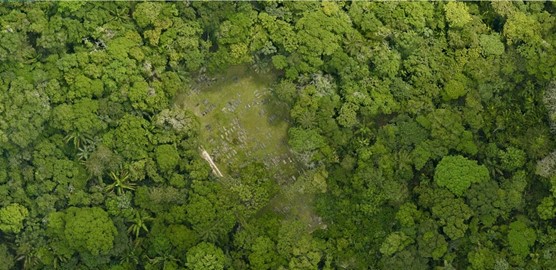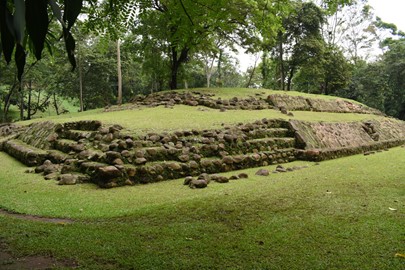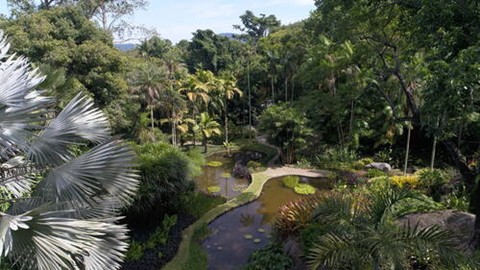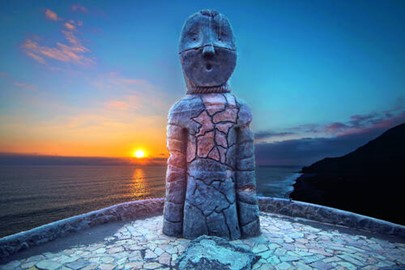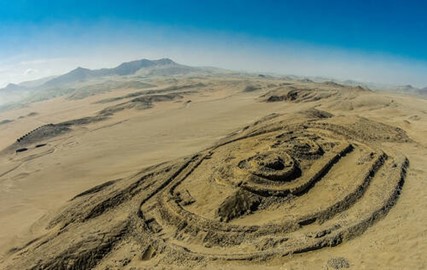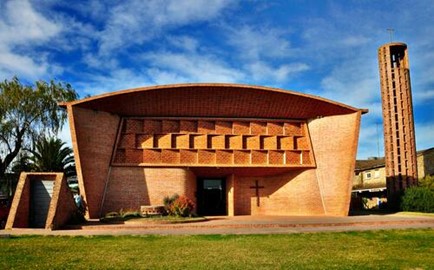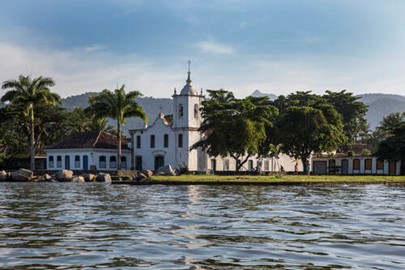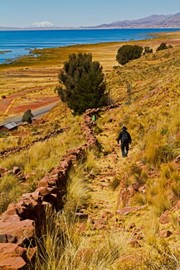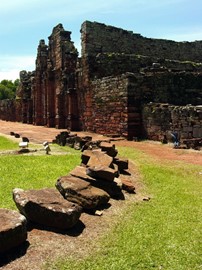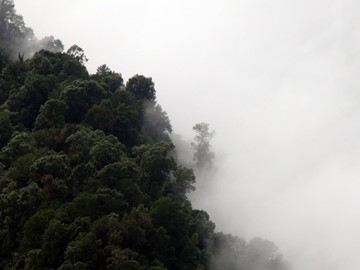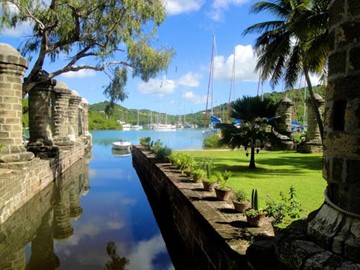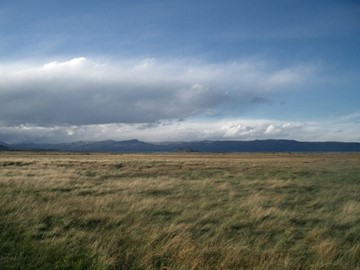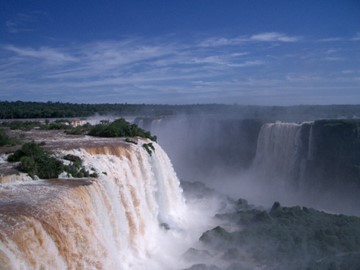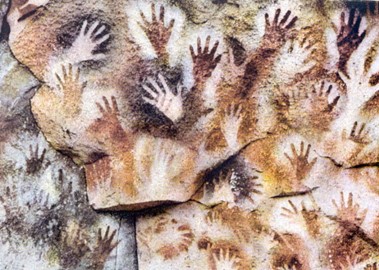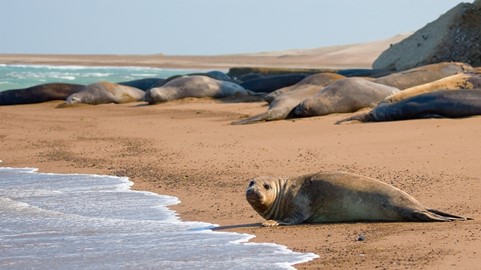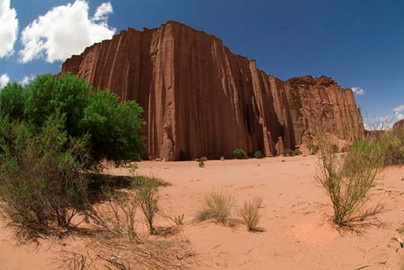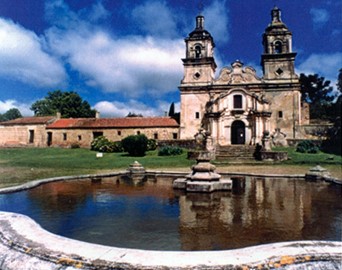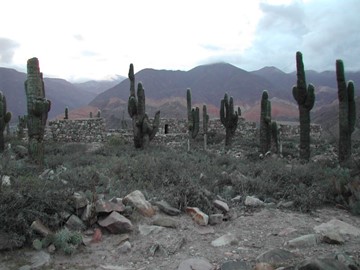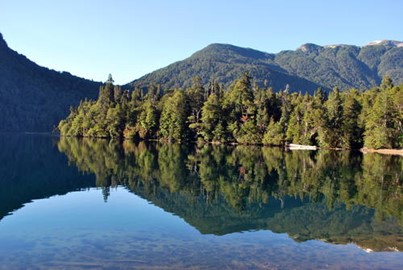region :: latin america and the caribbean
Port Royal
The Archaeological Ensemble of 17th Century Port Royal, a UNESCO World Heritage site in Jamaica, is a remarkably preserved terrestrial and underwater archaeological site showcasing a pivotal English colonial trading hub. Devastated by a 1692 earthquake, the submerged city, including structures like taverns and markets, offers a vivid snapshot of daily life, with artifacts such as Chinese porcelain and pewter revealing trade and cultural practices. On land, Fort Charles and remnants like the women’s goal hig... Read More
Wixárika Route
The Wixárika Route through Sacred Sites to Wirikuta (Tatehuarí Huajuyé), a UNESCO World Heritage site in Mexico, is a 500-kilometer pilgrimage trail revered by the Wixárika (Huichol) people, connecting 20 sacred sites across five states. Known as the 'Path of Our Grandfather Fire,' this ancestral route embodies the Wixárika’s spiritual and cultural traditions, involving rituals to honor deified ancestors and ensure agricultural prosperity. Recognized in July 2025 as Latin America’s first living indigenous t... Read More
Transisthmian Route of Panamá
The Colonial Transisthmian Route of Panamá, a UNESCO World Heritage site, is a historic network of paths and fortifications that connected the Pacific and Caribbean coasts during the Spanish colonial period (1501–1821). Comprising Panamá Viejo, Casco Antiguo, Portobelo, San Lorenzo, and the Camino Real and Cruces roads, it facilitated the transport of South American silver and goods, shaping global trade. This route, a precursor to the Panama Canal, showcases military architecture and cultural exchanges.
Cavernas do Peruaçu National Park
Cavernas do Peruaçu National Park, a UNESCO World Heritage Site in Minas Gerais, Brazil, is renowned for its vast limestone caves, some spanning up to six kilometers, and prehistoric rock art dating back 12,000 years. Located at the intersection of the Cerrado, Caatinga, and Atlantic Forest biomes, the park hosts over 2,000 species of plants and animals, many of which are endangered. Notable features include the Gruta do Janelão, home to the world’s largest stalactite, the 28-meter Perna da Bailarina, and a... Read More
Lençóis Maranhenses National Park
Lençóis Maranhenses National Park, a UNESCO World Heritage site in Brazil, is a stunning natural wonder featuring vast, undulating sand dunes interspersed with crystal-clear freshwater lagoons that form during the rainy season. This unique coastal desert landscape, sculpted by wind and water, supports a surprising array of wildlife, including migratory birds and fish that thrive in the seasonal pools. Visitors can explore this breathtaking expanse through guided tours, marveling at the surreal beauty of whi... Read More
ESMA Museum and Site of Memory
The ESMA Museum and Site of Memory, a UNESCO World Heritage site in Argentina inscribed in September 2023, is a former naval school in Buenos Aires that served as a clandestine detention center during the 1976–1983 military dictatorship. Known as Argentina’s “Auschwitz,” it held around 5,000 of the 30,000 “disappeared,” with preserved spaces like the Officers’ Quarters revealing the horrors of torture and repression. As Argentina’s seventh UNESCO site and first tied to recent history, it stands as a global ... Read More
Jodensavanne Archaeological Site
The Jodensavanne Archaeological Site, a UNESCO World Heritage site in Suriname inscribed in September 2023, comprises the Jodensavanne Settlement and Cassipora Creek Cemetery, located along the Suriname River. Founded by Sephardic Jews in the 17th century, this autonomous community features ruins of the Americas’ earliest architecturally significant synagogue (1685), cemeteries, and brick foundations, reflecting its peak as a plantation hub with extensive privileges. Recognized as Suriname’s third UNESCO si... Read More
Tak’alik Ab’aj
Tak’alik Ab’aj, a UNESCO World Heritage site in Guatemala inscribed in September 2023, is an ancient archaeological park in Retalhuleu, thriving from the 9th century BCE to the 10th century CE. Located along the Pacific coast, this key trade hub blends Olmec and Maya influences, featuring over 240 monuments like stelae, a possible colossal head, and early hieroglyphs across four terraced groups. Recognized as Guatemala’s fourth UNESCO site, it showcases 1,700 years of cultural transition, urban planning, an... Read More
Sítio Roberto Burle Marx
The Sítio Roberto Burle Marx, a UNESCO World Heritage site in Brazil, is a 40-hectare estate in Rio de Janeiro’s Barra de Guaratiba, recognized in 2021 as a cultural landscape. Created by landscape architect Roberto Burle Marx from 1949 until his death in 1994, it features modernist gardens with over 3,500 tropical plant species and seven structures, including his home and studio. Donated to Brazil in 1985 and managed by IPHAN, this site exemplifies his innovative tropical design, merging art, nature, and c... Read More
Chinchorro Culture
The Chinchorro Culture, a UNESCO World Heritage site in Chile’s Arica and Parinacota Region, recognized in 2021, preserves the world’s oldest known artificial mummification practices, dating back over 7,000 years. This coastal hunter-gatherer society thrived in the Atacama Desert, leaving behind three key sites—Faldeos del Morro, Colón 10, and Camarones—featuring cemeteries with naturally and artificially mummified bodies. These sites reflect the Chinchorro’s complex spirituality and adaptation to an arid e... Read More
Chankillo
Chankillo, a UNESCO World Heritage site in Peru, recognized in 2021, is a 2,300-year-old archaeological complex in the Casma Valley, featuring the oldest known solar observatory in the Americas. Built by a pre-Inca civilization around 300 BCE, it includes 13 stone towers aligned to track the sun’s annual arc, alongside a fortified temple and ceremonial plaza. This sophisticated astronomical site reflects advanced knowledge of solar cycles, likely used for seasonal rituals and agriculture, offering a rare gl... Read More
Church of Atlántida
The Church of Atlántida, a UNESCO World Heritage site in Uruguay, recognized in 2021, is a modernist masterpiece designed by engineer Eladio Dieste in 1958 near Montevideo. Known as Iglesia de Cristo Obrero, its innovative brick architecture features undulating walls and a bell tower built without steel reinforcement, showcasing Dieste’s pioneering use of reinforced ceramics. This humble yet striking structure blends functionality with aesthetic grace, reflecting Uruguay’s 20th-century architectural ingenui... Read More
Paraty and Ilha Grande
Paraty and Ilha Grande, a UNESCO World Heritage site in Brazil, form a stunning coastal region known for its rich history and pristine natural beauty. Paraty, a well-preserved colonial town, features charming cobblestone streets, colorful buildings, and a vibrant cultural scene, reflecting its past as a key port during the gold rush era. Ilha Grande, a nearby island, boasts unspoiled beaches, lush rainforests, and diverse marine life, offering a paradise for nature lovers and adventurers. Together, they sho... Read More
Qhapaq Ñan
Qhapaq Ñan, Andean Road System, a UNESCO World Heritage site in South America, recognized in 2014, is a vast Incan road network spanning six countries—Argentina, Bolivia, Chile, Colombia, Ecuador, and Peru—built from the 13th to 16th centuries. Stretching across mountains, valleys, and deserts, this engineering marvel linked communities, facilitated trade, and supported the Inca Empire’s administration with stone paths, bridges, and rest stops. This transnational site reflects South America’s pre-Columbian ... Read More
Jesuit Missions of the Guaranis
The Jesuit Missions of the Guaranis, a UNESCO World Heritage site in South America, recognized in 1983 and 1984, are five 17th- and 18th-century mission ruins across Argentina, Brazil, and Paraguay, built to convert and protect Guarani Indigenous peoples. Featuring baroque churches, workshops, and communal layouts amid lush landscapes, they reflect a unique fusion of European and Indigenous cultures under Jesuit stewardship. This transnational site showcases South America’s colonial history, highlighting a ... Read More
Talamanca and La Amistad Reserves
Talamanca Range and La Amistad, a UNESCO World Heritage site in Costa Rica and Panama, recognized in 1983 with an extension in 1990, is a vast tropical wilderness spanning the Talamanca Mountains, protected as a transboundary park since 1982. Featuring cloud forests, peaks like Cerro Chirripó, and rich biodiversity with jaguars and quetzals, it reflects Central America’s ecological diversity. This cross-border site showcases a shared natural heritage, preserving one of the region’s last intact highland ecos... Read More
Antigua Naval Dockyard
Antigua Naval Dockyard, a UNESCO World Heritage site in Antigua and Barbuda, recognized in 2016, is an 18th-century British naval base built in a sheltered harbor, operational from 1725 to 1855. Featuring Georgian-style buildings, docks, and fortifications constructed partly by enslaved Africans, it supported Britain’s Caribbean fleet during colonial wars. This well-preserved site showcases Antigua’s maritime heritage, reflecting a pivotal era of naval power and colonial history in the West Indies.
Los Glaciares
Los Glaciares, a UNESCO World Heritage site in Argentina, recognized in 1981, is a vast Patagonian wilderness renowned for its massive glaciers, including the iconic Perito Moreno. Featuring towering ice fields, rugged peaks like Fitz Roy, and pristine lakes, it reflects a dynamic glacial landscape of global significance. This site showcases Argentina’s natural heritage, offering a stunning testament to Earth’s icy beauty and ongoing geological processes.
Iguazu
Iguazu National Park, a UNESCO World Heritage site in Argentina, recognized in 1984, is a subtropical rainforest preserve famed for the awe-inspiring Iguazu Falls, a system of over 275 cascading waterfalls. Surrounded by lush biodiversity, including jaguars and rare orchids, it reflects a vibrant ecosystem along the Argentina-Brazil border. This site showcases Argentina’s natural heritage, highlighting a breathtaking blend of water, wildlife, and verdant splendor.
Cueva de las Manos
Cueva de las Manos, a UNESCO World Heritage site in Argentina, recognized in 1999, is a prehistoric rock art site in Patagonia featuring cave paintings from 13,000 to 9,500 years ago. Its vivid hand stencils, hunting scenes, and animal depictions, etched in vibrant colors along a canyon wall, reflect the artistry of early hunter-gatherers. This site showcases Argentina’s ancient heritage, preserving a stunning record of human creativity in a remote landscape.
Península Valdés
Península Valdés, a UNESCO World Heritage site in Argentina, recognized in 1999, is a coastal reserve along the Atlantic renowned for its exceptional marine biodiversity. Home to breeding grounds for southern right whales, sea lions, and Magellanic penguins, its rugged shores and steppe landscape reflect a critical wildlife haven. This site showcases Argentina’s natural heritage, offering a vital sanctuary for marine species in a pristine Patagonian setting.
Ischigualasto and Talampaya
Ischigualasto and Talampaya, a UNESCO World Heritage site in Argentina, recognized in 2000, are contiguous desert parks preserving a 250-million-year geological record from the Triassic period. Featuring striking red rock formations, fossil beds with early dinosaur remains, and petrified forests, they reflect Earth’s ancient past in a stark, arid landscape. This site showcases Argentina’s scientific heritage, offering a rare window into prehistoric life and geological evolution.
Jesuit Block and Estancias of Córdoba
Jesuit Block and Estancias of Córdoba, a UNESCO World Heritage site in Argentina, recognized in 2000, is a 17th- and 18th-century complex in Córdoba featuring a Jesuit college, church, and five rural estates. Built to fund missionary work, its baroque architecture and productive lands reflect a unique blend of European and Indigenous influences. This site showcases Argentina’s colonial heritage, preserving a testament to Jesuit education and economic ingenuity in the Americas.
Quebrada de Humahuaca
Quebrada de Humahuaca, a UNESCO World Heritage site in Argentina, recognized in 2003, is a dramatic Andean valley tracing 10,000 years of human history along an ancient Inca trade route. Featuring colorful rock formations, pre-Columbian villages, and colonial towns like Humahuaca, it reflects a vibrant cultural mosaic of Indigenous and Spanish influences. This site showcases Argentina’s rich heritage, blending natural splendor with a deep historical narrative.
Los Alerces
Los Alerces, a UNESCO World Heritage site in Argentina, recognized in 2017, is a pristine Patagonian wilderness preserving ancient alerce trees, some over 3,000 years old, within a network of lakes and forests. Nestled in the Andes, its glacial landscapes and rare species like the huemul deer reflect exceptional biodiversity. This site showcases Argentina’s natural heritage, safeguarding a living relic of Earth’s temperate ecosystems.






